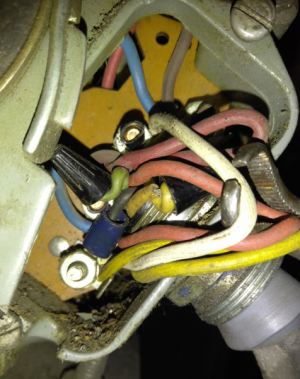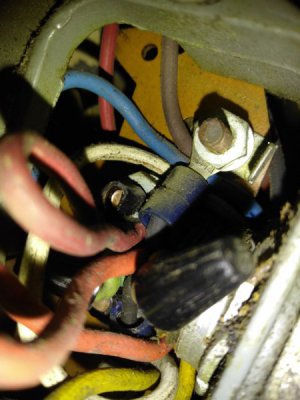clif do you have a multimeter of some kind?
Yes, and very basic knowledge on using it. Shorts in automotive wiring, finding resistance, and voltage across wires and components.
Have you done any electrical work?
Both residential wiring, including my entire shop, to include building from scratch a three phase converter.
Some stereo and appliance repair. Made my first treadmill motor controller from a MC-60 board, for my wood band saw.
This will show us how the motor is currently connected either for 110 or 220.
I can state the machine currently is wired for 110, both by the plug it has, and from the gentleman I got it from had no 220 circuits near the lathe when I picked it up, only 20 amp 110 plugs.
All the machine had was a single wire on off switch, on the top of the spindle cover in the recess, looks OEM due to the recess cast in for the switch.
Here are the pictures from inside the motor wiring connections, very crowded in there.


I see four screws with nuts on the board


